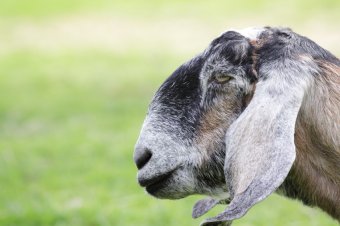

Everything You Need to Know about Goat Farming
There are many good reasons for raising dairy goats and this article is the best place to start for more information about the best goats for milk.
Maybe your children are looking for a 4-H project. Perhaps you have always dreamed of providing your family’s milk supply. Some people would like to start a home business based on goat milk. It’s possible that you aren’t even sure why you want goats, and you wouldn’t be unusual if you said you simply like the fascinating animals.
But the reason is important because to a great degree, that will determine how you will raise them, and how you should get started.
Therefore, our goal will be to help you explore the possibilities. We’ll tell you what you must know about goats before you start raising them for any reason. But only you can decide why you want to raise them, and therefore how much time, money, effort, study and sheer dedication you will allot to the enterprise.
Even if you have never met a goat in person, you probably know, from pictures and reading, that they are friendly, docile, curious and intelligent. And of course, they produce rich, delicious milk.
A good milking doe will produce an average of about 2-3 quarts a day, but that’s extremely misleading. The main reason is that most goats will produce a lot of milkâ often a gallon or more per dayâsoon after kidding. After that peak, production declines, sometimes slowly, sometimes not so slowly. A good goat should produce for 9-10 months of the year, although the last part of the lactation (milking period) might only amount to a few cups a day. A not-so-good goat might only produce for a couple of months before going dry.
The best goats for milk: A breed overview
Naturally you’ll want to know what the best goats for milk are.
While there are hundreds of breeds of goats throughout the world, only eight are generally recognized as dairy breeds in the United States and thus the best goats for milk.
- The most popular is the Nubian. While these animals can be any color or combination of colors, they are easily identified by their long drooping ears and “Roman noses.” Many people say that Nubians don’t produce as much as other breeds, but their milk is richer (higher in butterfat). More on that in a moment.
- Another common breed is the Saanen, which is always white or light cream and has a “dished” or concave face and erect ears. Saanen goats have a reputation for being the best milk producers, but with the lowest butterfat production. (Again, please reserve judgment for a moment.)
- Sables are Saanens that are not all white or light cream. Like Saanens, their ears are erect but their face may be straight or dished. The Sable may be any color or combination of colors, solid or patterned, EXCEPT solid white or solid light cream.
- One of the easiest breeds to identify is the LaMancha, which often appears to be earless. The ears are very short. LaMancha goats can be any color or combination, and are generally considered to be fine dairy animals.
- Toggenburgs are easily identified by their color pattern, which is always a shade of brown with white markings, most notably stripes on the face. The common generalization is that Toggs have long lactations but with butterfat on the low side.
- Alpine goats come in the whole spectrum of goat colors and patterns, which the official breed standard describes in great detail.
- Less common is the Oberhasli. These are bay-colored, or reddish-brown, accented with black markings.
- And finally, the Nigerian Dwarf. Some people claim they are easy to milk and good producers despite their small size… or even that they’re ideal for people who don’t need much milk and want an easily handled animal.
Goats of any breed and either sex can have horns. It’s best to start with one that is naturally hornless or has been disbudded or dehorned at an early age.
Breed averages are meaningless
There is no best breed. There is far more variation among animals of the same breed than there is between one breed and another. Some Nubians produce much more milk than some Saanens. Some Saanens produce more butterfat than some Nubians. And “breed average” milk production means nothing when choosing an animal.
YOU MIGHT ALSO LIKE











